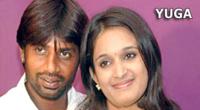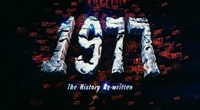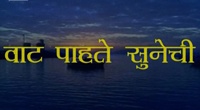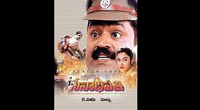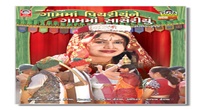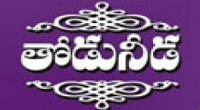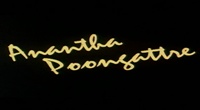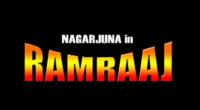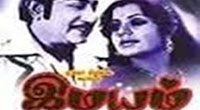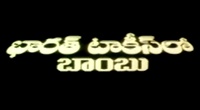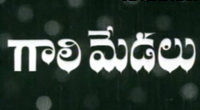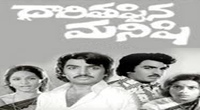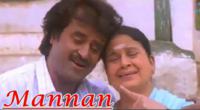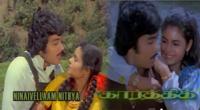| Mahabharata | |
|---|---|
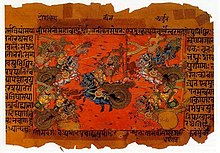 Manuscript illustration of the Battle of Kurukshetra | |
| Information | |
| Religion | Hinduism, Jainism, Indonesian philosophy |
| Author | Vyasa |
| Language | Sanskrit |
| Verses | 200,000 |

The Mah?bh?rata (US: /m?h???b??r?t?/, UK: /?m??h??b??r?t?/; Sanskrit: ?????????, Mah?bh?ratam, pronounced ) is one of the two major Sanskrit epics of ancient India, the other being the R?m?ya?a. The title may be translated as "the great tale of the Bh?rata dynasty".
The Mah?bh?rata is an epic legendary narrative of the Kuruk?etra War and the fates of the Kaurava and the P???ava princes. It also contains philosophical and devotional material, such as a discussion of the four "goals of life" or puru??rtha (12.161). Among the principal works and stories in the Mah?bh?rata are the Bhagavad Gita, the story of Damayanti, an abbreviated version of the R?m?ya?a, and the story of ??yasringa, often considered as works in their own right.
Traditionally, the authorship of the Mah?bh?rata is attributed to Vy?sa. There have been many attempts to unravel its historical growth and compositional layers. The oldest preserved parts of the text are thought to be not much older than around 400 BCE, though the origins of the epic probably fall between the 8th and 9th centuries BCE. The text probably reached its final form by the early Gupta period (c. 4th century CE). According to the Mah?bh?rata itself, the tale is extended from a shorter version of 24,000 verses called simply Bh?rata.
The Mah?bh?rata is the longest epic poem known and has been described as "the longest poem ever written". Its longest version consists of over 100,000 ?loka or over 200,000 individual verse lines (each shloka is a couplet), and long prose passages. At about 1.8 million words in total, the Mah?bh?rata is roughly ten times the length of the Iliad and the Odyssey combined, or about four times the length of the R?m?ya?a. W. J. Johnson has compared the importance of the Mah?bh?rata in the context of world civilization to that of the Bible, the works of William Shakespeare, the works of Homer, Greek drama, or the Quran. Within the Indian tradition it is sometimes called the Fifth Veda.
Contents
Textual history and structure
The epic is traditionally ascribed to the sage Vy?sa, who is also a major character in the epic. Vy?sa described it as being itih?sa (history). He also describes the Guru-shishya parampara, which traces all great teachers and their students of the Vedic times.
The first section of the Mah?bh?rata states that it was Ga?e?a who wrote down the text to Vyasa's dictation.
The epic employs the story within a story structure, otherwise known as frametales, popular in many Indian religious and non-religious works. It is first recited at Takshashila by the sage Vai?amp?yana, a disciple of Vy?sa, to the King Janamejaya who is the great-grandson of the P???ava prince Arjuna. The story is then recited again by a professional storyteller named Ugra?rava Sauti, many years later, to an assemblage of sages performing the 12-year sacrifice for the king Saunaka Kulapati in the Naimi?a Forest.
The text was described by some early 20th-century western Indologists as unstructured and chaotic. Hermann Oldenberg supposed that the original poem must once have carried an immense "tragic force" but dismissed the full text as a "horrible chaos." Moritz Winternitz (Geschichte der indischen Literatur 1909) considered that "only unpoetical theologists and clumsy scribes" could have lumped the parts of disparate origin into an unordered whole.
Accretion and redaction
Research on the Mah?bh?rata has put an enormous effort into recognizing and dating layers within the text. Some elements of the present Mah?bh?rata can be traced back to Vedic times. The background to the Mah?bh?rata suggests the origin of the epic occurs "after the very early Vedic period" and before "the first Indian 'empire' was to rise in the third century B.C." That this is "a date not too far removed from the 8th or 9th century B.C." is likely. Mah?bh?rata started as an orally-transmitted tale of the charioteer bards. It is generally agreed that "Unlike the Vedas, which have to be preserved letter-perfect, the epic was a popular work whose reciters would inevitably conform to changes in language and style," so the earliest 'surviving' components of this dynamic text are believed to be no older than the earliest 'external' references we have to the epic, which may include an allusion in Panini's 4th century BCE grammar A???dhy?y? 4:2:56. It is estimated that the Sanskrit text probably reached something of a "final form" by the early Gupta period (about the 4th century CE). Vishnu Sukthankar, editor of the first great critical edition of the Mah?bh?rata, commented: "It is useless to think of reconstructing a fluid text in a literally original shape, on the basis of an archetype and a stemma codicum. What then is possible? Our objective can only be to reconstruct the oldest form of the text which it is possible to reach on the basis of the manuscript material available." That manuscript evidence is somewhat late, given its material composition and the climate of India, but it is very extensive.
The Mah?bh?rata itself (1.1.61) distinguishes a core portion of 24,000 verses: the Bh?rata proper, as opposed to additional secondary material, while the A?val?yana G?hyas?tra (3.4.4) makes a similar distinction. At least three redactions of the text are commonly recognized: Jaya (Victory) with 8,800 verses attributed to Vy?sa, Bh?rata with 24,000 verses as recited by Vai?amp?yana, and finally the Mah?bh?rata as recited by Ugra?rava Sauti with over 100,000 verses. However, some scholars, such as John Brockington, argue that Jaya and Bharata refer to the same text, and ascribe the theory of Jaya with 8,800 verses to a misreading of a verse in ?diparvan (1.1.81). The redaction of this large body of text was carried out after formal principles, emphasizing the numbers 18 and 12. The addition of the latest parts may be dated by the absence of the Anu??sana-parva and the Vir?ta parva from the "Spitzer manuscript". The oldest surviving Sanskrit text dates to the Kushan Period (200 CE).
According to what one character says at Mbh. 1.1.50, there were three versions of the epic, beginning with Manu (1.1.27), Astika (1.3, sub-parva 5) or Vasu (1.57), respectively. These versions would correspond to the addition of one and then another 'frame' settings of dialogues. The Vasu version would omit the frame settings and begin with the account of the birth of Vyasa. The astika version would add the sarpasattra and a?vamedha material from Brahmanical literature, introduce the name Mah?bh?rata, and identify Vy?sa as the work's author. The redactors of these additions were probably P?ñcar?trin scholars who according to Oberlies (1998) likely retained control over the text until its final redaction. Mention of the Huna in the Bh??ma-parva however appears to imply that this parva may have been edited around the 4th century.
The ?di-parva includes the snake sacrifice (sarpasattra) of Janamejaya, explaining its motivation, detailing why all snakes in existence were intended to be destroyed, and why in spite of this, there are still snakes in existence. This sarpasattra material was often considered an independent tale added to a version of the Mah?bh?rata by "thematic attraction" (Minkowski 1991), and considered to have a particularly close connection to Vedic (Brahmana) literature. The Pañcavim?a Brahmana (at 25.15.3) enumerates the officiant priests of a sarpasattra among whom the names Dh?tar??tra and Janamejaya, two main characters of the Mah?bh?rata's sarpasattra, as well as Tak?aka, the name of a snake in the Mah?bh?rata, occur.
Historical references
The earliest known references to the Mah?bh?rata and its core Bh?rata date to the A???dhy?y? (sutra 6.2.38) of P??ini (fl. 4th century BCE) and in the A?val?yana G?hyas?tra (3.4.4). This may mean the core 24,000 verses, known as the Bh?rata, as well as an early version of the extended Mah?bh?rata, were composed by the 4th century BCE. A report by the Greek writer Dio Chrysostom (c. 40 - c. 120 CE) about Homer's poetry being sung even in India seems to imply that the Iliad had been translated into Sanskrit. However, Indian scholars have, in general, taken this as evidence for the existence of a Mah?bh?rata at this date, whose episodes Dio or his sources identify with the story of the Iliad.
Several stories within the Mah?bh?rata took on separate identities of their own in Classical Sanskrit literature. For instance, Abhijñ?na??kuntala by the renowned Sanskrit poet K?lid?sa (c. 400 CE), believed to have lived in the era of the Gupta dynasty, is based on a story that is the precursor to the Mah?bh?rata. Urubha?ga, a Sanskrit play written by Bh?sa who is believed to have lived before K?lid?sa, is based on the slaying of Duryodhana by the splitting of his thighs by Bh?ma.
The copper-plate inscription of the Maharaja Sharvanatha (533–534 CE) from Khoh (Satna District, Madhya Pradesh) describes the Mah?bh?rata as a "collection of 100,000 verses" (?ata-sahasri sa?hit?).
The 18 parvas or books
The division into 18 parvas is as follows:
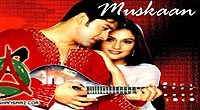
.jpg)
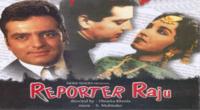
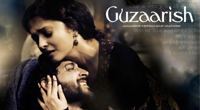
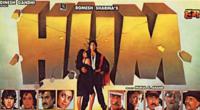
.jpg)

